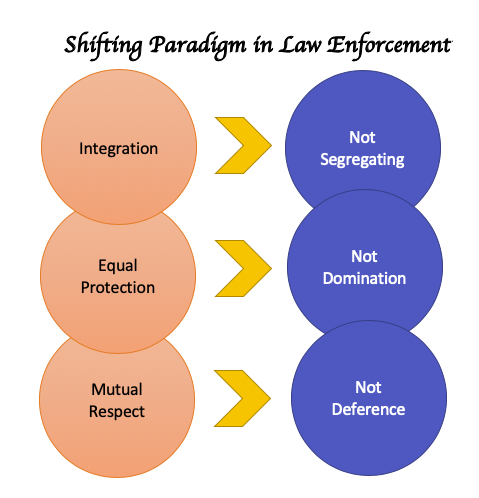10.5: Enforcement
- Page ID
- 16144
As the 21st century begins, the relative priority between enforcing law and maintaining racial/ethnic harmony is being reset. A new paradigm for policing multi-ethnic societies is emerging. The old paradigm was about maintaining order by my whatever means required. The new paradigm is about integration, not segregation; equal protection, not domination; mutual respect, not deference. In the old paradigm, enforcing the law was the highest value. In the new paradigm, enforcing the law is still important but increasingly is being placed second to maintaining racial and ethnic harmony.

The new paradigm reflects the changing cultural norms regarding tolerance for diversity and demands for equality. The timing could not be better. Dramatic demographic changes are happening in the world. Societies that once were dominated by a single ethnic group are rapidly becoming more heterogeneous as a result of the dual process of less-than-replacement fertility and immigration.
With the end of the cold war, international borders have become more porous than ever. In the United States, the whole concept of race relations is being transformed. Latinos have surpassed blacks as the largest minority in many major cities. Asians are majorities in some places. The white descendants of the Europeans who founded the country, and who have dominated it politically, economically, and demographically ever since, are projected to lose their majority status by the year 2050.
Today’s immigration has made the challenges of policing a multiethnic society all the more complex. The police are having to find ways to bridge cultural divides; to communicate in foreign languages; to win the trust of people whose past experience led them to mistrust or despise the police (Bowles, 2000); to protect foreigners both from xenophobic attacks and their own ethnic gangs. The patrol officer in critical to building that relationship of trust for the ethnic communities to engage with the police. Treating the community with fairness, equality, and respect will generate good will and trust in some elements of the community.

